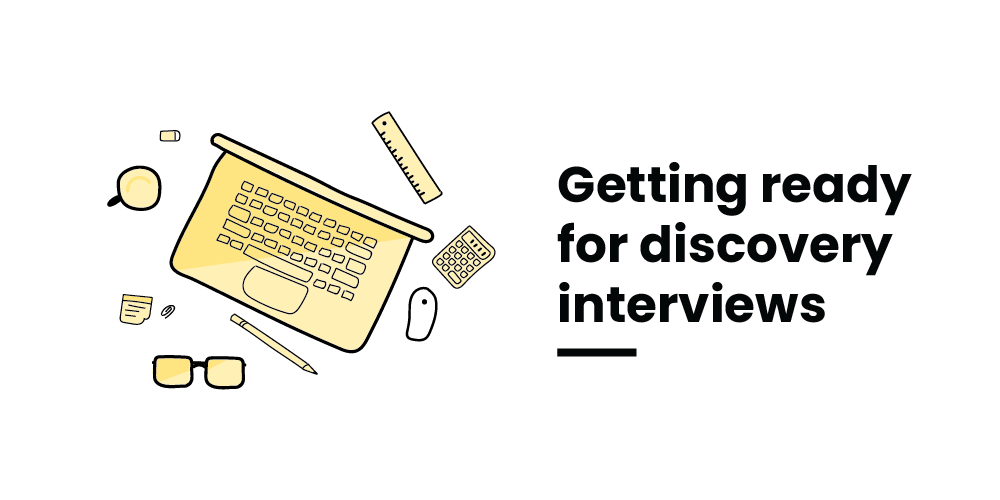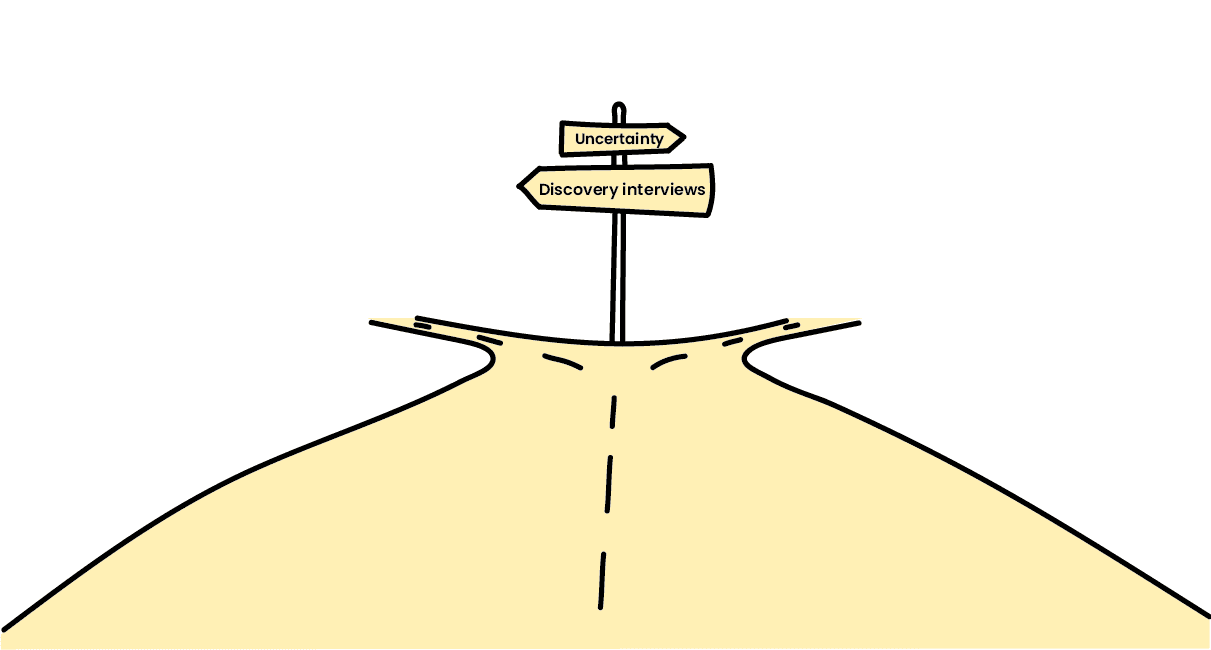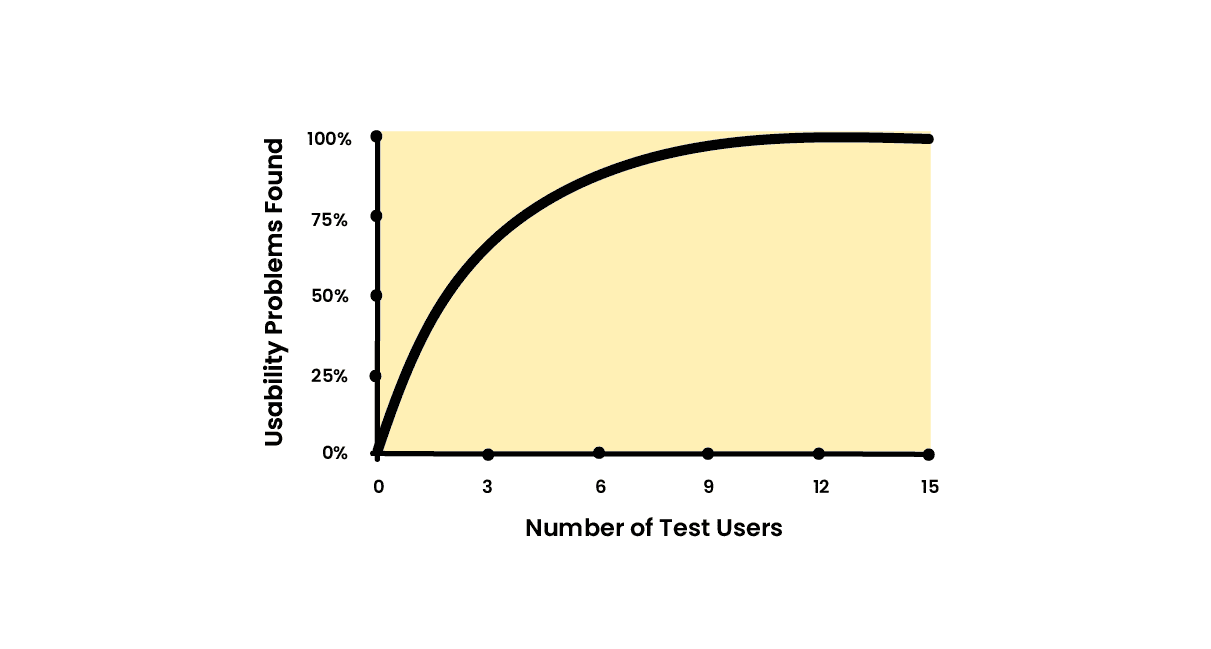After exploring the importance of user interviews and how it can help you, you’re probably wondering how to actually do them.
Technically speaking, you can interview your users in several ways. In this article we’re going to focus on ‘discovery interviews’ and guide you through a research plan.
A discovery interview provides a first hand account on why someone chooses to employ your product or service and what tasks they seek to accomplish through it.
These sessions provide a crisper image on how you might position (or re-position) your offering. These are typically carried out in the early stages of the design process, but can really be performed when you need a pulse check.
Your research plan can be as formal as you like, what's important is having a clear idea of what you want to uncover. To demonstrate how we build a research plan, we'll use SuzanneStays as a case study reference. This study looked at ways of providing accommodation and travel experiences for people with disabilities.
Step 1: Validate the method
This is more of a preliminary to establishing your research plan, but the first thing you want to do is ensure this is the right method for what you want to learn.
Think about what you want to build or the current state of your product or service and ask yourself:
- What purpose does this serve?
- When would someone use this?
- How would someone use this?
- Why would someone turn to this for help?
- The next thing to ask is 'How do I know this?'
Discovery interviews work to validate any assumptions you may have.
Step 2: Establish the objectives
Like any plan, it's essential to define exactly what you are working towards.
Write a list of things you want to learn from the interviews. Limiting the number of objectives to 3 - 5 is effective for keeping the plan direct and concise. You can always start wide, brainstorm a list and prioritise.
You don't have to solve everything. Pin point what is the most important thing to learn first in order to progress.
For SuzanneStays, some objectives might be:
- To map the journey people have when finding, booking and holidaying in places accessible to them,
- To identify the limitations people face,
- To assess the areas of opportunity in the industry.
Tip: Write your objectives with action verbs and ensure there is a measurable outcome. Try to avoid 'learn' or 'understand' as they can be more difficult to evaluate.
Step 3: Recruit
Recruit the people who represent your target group best. Define a list of characteristics or criteria to ensure the people you recruit can provide relevant insights.
As this is currently an Australian based service, we'll want to recruit people who:
- Live in Australia,
- Live with a low mobility disability,
- Have the desire to holiday away from home with their families and friends.
Tip: Take into consideration the people with disabilities who interact with your offering. Look to incorporate them into your represented target group and work towards an inclusive design.
What's a good way to find people?
- Your user base (free): this is the first place to start if you are someone who has a user base. You can reach out directly or send out a request calling for participants.
- Agencies (pay): there are people who specialise in connecting you with the right participants. E.g. usertesting.com or askable.com
- Social media (free/pay): powerful for expanding your reach - throw up a post on your LinkedIn, Instagram or Facebook.
- Ask the people you know (free...depending on who): They might also be able to connect you with the right participants.
Tip: Most of the time people are happy to offer their feedback but sometimes including an incentive helps drive interest. These don't have to exist in monetary form, think of your product or service and get creative with what you can do.
How many should I interview?
As a general rule of thumb, start off with 5 participants and scale up if you need to.
Norman Nielsen and Tom Landauer conducted research on usability tests and found that after sitting with the third participant, they had already observed much of the same things from the first and second user.
"As you add more and more users, you learn less and less"
If you are in a position where time and money is thin, running excessive sessions with little new insights may be a waste of your resources.
Step 4: Prepare a guide
Arguably the most important, an interview guide outlines the general structure of the interview and flow of conversation. Not every interview will go the way you expect, but a plan gives you a linear path and enough flexibility to change course should you need.
"Plans are useless, but planning is indispensable."
The general structure we follow is:
- Introduction
- Background
- Activities
- Wow moment
- Wrap up
Tip: Assign times to each section so that you have an idea of how long it could take and time box during the interview itself.
Introduction
Spend the first few minutes getting your participant comfortable and reiterate why you're both there.
To kick this off you want to:
- Introduce yourself and the purpose of the study
- Set the expectations of what the next hour will look like
- Encourage the participant to respond freely
- Reinforce there are no wrong answers
- Request if you can record the session
Tip: Record the session for your own internal playback, so long as you have the participants consent. You can use these clips to compile a playback video of your findings.
Background
This largely involves getting to know your participant. It serves as a way to build rapport and equips you with details that you can weave into the conversation later.
For example, I might ask:
- What do you do?
- What's your family like?
- What's your favourite thing to do on holidays?
- What destination has been on your bucket list?
Activities
This is the main event. There is no uniform way to do this as it really depends on your study. Try out one of these activities:
’Thinking about when…’
This is great for gaining insights on your participants personal experience. This activity asks the participant to reflect on a specific moment and recount what happened. It helps with answering those questions discussed earlier, such as how and when someone interacts with your offering.
Mapping the journey
Similar to ‘Thinking about when…’, you could also ask the participant to walk you through their process. Build a map of based on what they did, how they felt and what they were thinking at each stage. Combining these three factors provides you with a richer picture of their journey.
Card sorting
This activity is useful for gauging your participants preferences. It asks them to order a list of statements based on importance or relevance and getting them to talk about why they ranked them that way. This is a great hybrid for generating that quantitative and qualitative data.
Wow moment
Now’s the right time to ask those ‘beyond the horizon’ type questions. As the participant has shared their experiences in detail, you can now use this time to have them reflect on what next.
What is one thing that would make you go ‘Wow’ if you woke up tomorrow and saw it?
Wrap up
Reel it in by asking if they have any final thoughts to share. If you're interested in building a list of participants to speak with, you can also use this time to see if they'd be interested in participating again.
Tip: You can run sessions with the same participants as a way to check back in after you've made some more progress. You'll still want feedback from a range of people, but it does help if you have some contacts ready to go.
TLDR;
Discovery interviews are extremely valuable and rich with learnings when you take the time to effectively plan for it. You'll want to:
- Make sure this method is right for you.
- Define the goals of the research.
- Find people to talk to.
- Put together a guide.
Go forth and interview. Let us know how you go!







